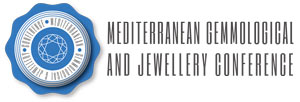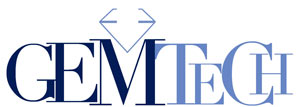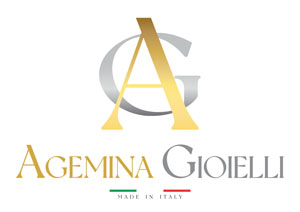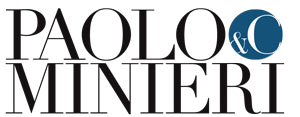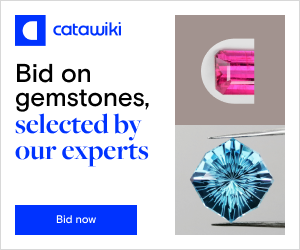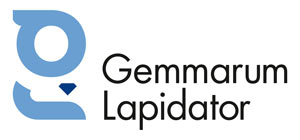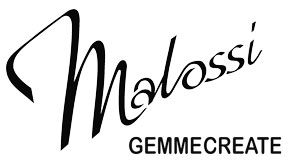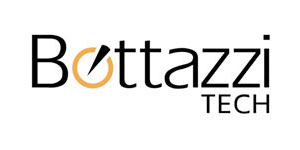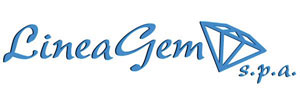News of a rough ruby specimen from Tanzania going up for auction in Dubai and valued at «US$120 Million» shocked the international gem trade. Shocked because it was neither record-breaking, nor – according to the experts called in to evaluate the case – worth even a very small percentage of the outrageous US$120M figure.
These were the facts as witnessed and reported by Jeffery Bergman.
Misrepresented and overvalued low-grade gemstone rough scam appraisals are an embarrassment to the trade. The “Burj Alhamal” ruby is not worth the estimated 120 million US$ but barely 1000 dollars.

Named the “Burj Alhamal” by presenters SJ Gold & Diamond, Managing Director Patrick Pilati claimed the specimen was from the high-value ruby mines of Winza, Tanzania and was one of 12 in their “Callisto Collection”.
The first indication something was amiss is the declared weight of 8,400 carats and 2.8 kilograms. 8,400 carats equals 1.68 kg, not 2.8 kg, and a good clue it was not being presented by experienced gemstone professionals. Additionally, it was eventually revealed the actual weight is 3.4 kg and one of not 12, but a total of 25 ruby specimens represented by SJ Gold & Diamonds.
Second clue is the green matrix encasing the ruby specimen, a clear indicator it cannot be from the high-value ruby mines of Winza, but from the low-value mines of Longido which is famous for producing these large ruby in green zoisite specimens.
Annually exported from Tanzania by the ton for carvings and ornamental purposes, the widely recognized wholesale value of Longido ruby-in-zoisite specimens is around US$300/kg, with several examples documented well over 40 kg thus tossing the “record-breaking” claim in the rubbish bin.

Months before this attempted scam was launched in Dubai, I was approached by email with a collection of 25 ruby specimens all with GIA, Gemological Institute of America, lab reports verifying they are very low-quality, yet indeed natural ruby specimens. Photos of the entire 88 kg lot included the 3.4 kg “Burj Alhamal” specimen and were claimed to have «new appraisals by the world’s top appraiser Miguel Zenetos» with an approximate value a bit over US$3Billion.

Miguel Carlos Zenetos, a Brazilian gemologist who for the past decade has notoriously made a name for himself by grossly overvaluing low-grade rough gemstones, was kicked out of the AGA – Accredited Gemologists Association – and the NAJA – National Association of Jewelry Appraisers. An example of Zenetos’ fraudulent work is a GIA report and appraisal of a Longido-type ruby specimen of 0.904 kg (904 grams) outrageously over-valued at US$49,340,000 as the actual fair-market-value is well under US$1000.
Dubai based precious gemstones dealer Mr. Narula of Maharaja Gems LLC said «At first, I just laughed at the ridiculous proclamations regarding the Burj Alhamal ruby. Then I grew angry as I realized SJ Gold and Diamond had damaged Dubai’s reputation by using it to launch this fraudulent misrepresentation as both record breaking and of very high value, when in fact is a comparatively small ruby-in-zoisite specimen worth only US$1000 at the most».
According to www.gov.uk, SJ Gold & Diamonds parent company, SJ Global Investments Worldwide Ltd., went into liquidation in 2021. By grossly misrepresenting the weight, origin and value of the “Burj Alhamal” ruby, it seems SJ Gold and Diamond was hoping to lure an uninformed wealthy buyer to a post-Ramadan auction in Dubai. Through unscrupulous misrepresentation of the “Burj Alhamal” ruby, SJ Gold and Diamond and their managing director Patrick Pilati have become the object of derision by gemstone experts worldwide, and regrettably, at the expense of Dubai’s fine reputation.
PhD. Gemologist Thomas Hainschwang, Director of GGTL Laboratories – Gemlab in Geneva and Liechtenstein called it «one of the biggest attempted scams in the history of the gem trade» and that «the security guard standing by this rock costs more per day than what the stone is».

Article by Jeffery Bergman, published on IGR – Rivista Italiana di Gemmologia #15, Autumn 2022
Ken Scarratt: unfair overpricing of large specimens might be reduced introducing “not facetable” as a grade
Kenneth Scarratt, one of the world most authoritative gemologists, a pearl expert, served in many gemological institutes including AIGS, GIA, DANAT and ICA GemLab.

IGR: Examples of unreasonable pricing of low-grade, low-value materials have been reported for years…
Ken Scarratt: It is unfortunate that there will always be those individuals who seek to pray on people with little or no knowledge of what is being transacted. The individuals used to be termed “confidence tricksters” in my youth but regardless of their pseudonym they all target a specific audience (who generally have more money than sense) and through various means, e.g., a smartly dressed appearance amid opulent surroundings, pitch a grossly overpriced “asset” to the wide-eyed and excited “mark”.
IGR: Can anything be done to avoid similar episodes in the future?
Ken Scarratt: I do not think these situations can be “avoided” as there will always be those dishonest individuals who want to “get rich quick” and those gullible enough to fall for the pitch. However, those of us who have enough knowledge of the gemstone industry should maybe stand-up and challenge these dubious practices as and when they occur by warning those that seem to be the target audience.
IGR: The gem industry and trade, the leading associations, as well as prominent jewelry brands are insisting on ethical issues. Some people are wondering if by chance the big issues related to sustainability, responsible sourcing have not overshadowed the one related to fair disclosure and correctness of gemstone value determination…
Ken Scarratt: I do not think sustainability and responsible sourcing are overshadowing disclosure and improper valuations, it is just that the target audience differs.
Sustainability and responsible sourcing are really focused on the professional gemstone markets where, apart from few notable exceptions over the years, dishonesty leads to a black mark on your name and extreme difficulty in doing business thereafter – not something someone in professional gemstone market would want because they are in it for the long-haul.
Dishonesty seems to come from those that are not professionals and certainly would not be embracing sustainability. They enter the gemstone market from, and remain in, the periphery, disappearing as quickly as they emerged. This is true as much for the perpetrators as it is for those who facilitate their game with grossly exaggerated valuations that are basically worthless.
IGR: It is often noted that many of these questionable appraisal reports refer back to gemological reports previously issued by world reputed labs. The original report number issued by these institutes, which obviously don’t bear any responsibility for any subsequent use of their documents, is also at times mentioned in the appraisal reports.
Ken Scarratt: Valuing a gemstone or jewellery item, whether it is for insurance, probate, or resale, requires tremendous knowledge that can only be gained after intense study and experience. The valuer also needs a deep knowledge of the local and international markets to perform the tasks in hand.
The valuer generally has good gemmological knowledge but will rely upon the results described in a gemmological report from a reputable laboratory in forming the basis of his valuation.
IGR: The layout appearance of these inaccurate appraisal reports is at times somewhat similar to those originally released by gemological institutes and which just reveal the gemological features and never indicate the value. It is clear that all this misleads people who are unable to separate the two reports at the time of their purchase. Can anything be done by the industry to increase the public awareness on this matter?
Ken Scarratt: It might be best if the laboratories and the valuers included words such as “not facetable grade” or other suitable words or phrases on these reports as and when necessary. This might be difficult for laboratories as they studiously avoid making remarks that might be interpreted as placing a value on a stone, but maybe the time has come to reexamine this approach when reporting upon these large opaque specimens whose only predictable use can be to act as door stops.
Antoinette Matlins: the record breaking ruby specimen fake news involves less respected media
Antoinette Matlins, PG, FGA, is an internationally respected gem and jewelry expert, author of books, and lecturer. She has gained wide recognition as a dedicated and effective consumer advocate.

IGR: Is the “Burj Alhamal” ruby a relatively isolated case or is it rather the tip of an iceberg hiding many episodes of misrepresented and overpriced gems?
Antoinette Matlins: It’s the tip of an iceberg… and it tears its ugly head over 20 years or so. A new generation can be reached.
IGR: Industry and trade professionals are one thing, ordinary people attracted by gemstones and jewelry pieces to be purchased are another thing…
Antoinette Matlins: Few people outside the gem field have the gemological knowledge to know what they are really buying, and worse, have no idea of the many ways that diamonds and gemstones can be altered, duplicated and imitated! Even when documentation is provided, the unknowledgeable have no way of knowing if it is reliable, or whether or not the stone matches the information reported on it (one of the scams consists of making “knock off” copies of a “real report” so it can be used repeatedly with synthetics and imitations being sold as the “real thing”, especially stones that are set).
IGR: And so once again, the dramatic increase in fraud and misrepresentation, especially with regard to the promotion of gems for “investment”, is putting the public at very high risk…
Antoinette Matlins: Keep in mind though that, historically, gemstones have been profitable investments for those who are savvy enough to seek knowledgeable people to guide them and assist them in acquiring stones of a size and quality that make them desirable, and who know that the price is poised to increase due to supply and increasing demand; such may be the case with cobalt spinel. Spinel is not a gemstone the public know much about and makes sense today as an investment, since with request increasing, demand could outpace supply and we could see prices rise dramatically. Unless…
IGR: Unless…?
Antoinette Matlins: Unless the new discovery in Tanzania produces so much that supply exceeds demand! Where gems are concerned, there is always a risk.
Even if there is a window of opportunity for investment, without extensive expertise and experience, one may not know if the stone is a treated one, or an imitation, or a synthetic!
IGR: Has something like this happened before?
Antoinette Matlins: es, it has. I saw it in the late 1970s–1980s, when unscrupulous sellers exploited thousands of people and raked in millions of dollars in profit. Unfortunately, the victims discovered the truth too late; not only would they never get the promised “investement return” but worse, they would lose 90% of the money they invested, if not more!
IGR: Is there still room for people misrepresenting gemstones, today?
Antoinette Matlins: es. Those guilty of misrepresentation are experienced in “conning” their target audience; that is, they are experts in “gaining the confidence of their victims”!
To make matters worse these clever sellers provide “documentation” which buyers don’t understand are bogus reports issued by bogus companies. Most people don’t even know they need an expert to confirm the purchase.
IGR: To your knowledge, which kind of people are most susceptible to scams resulting from wrong and overvalued gemstones?
Antoinette Matlins: here is no specific “kind” of people, but they are usually older with excellent retirement plans in place, and those who are already retired. The gem-investment schemes go after wealthy people, during periods of unstable stocks when the stock market is widely fluctuating and when people start to shift their focus to alternative investment possibilities.
IGR: How should the gemstone industry and gemologists react to this?
Antoinette Matlins: The gemological world needs to take immediate action to expose this scam as well as other fraudulent activities such as the green amethyst scams, running rampant on the internet! Those who might actually want to get additional confirmation about what they bought don’t know where to look to find the support of people with the expertise and ethical, professional standards of conduct such as Accredited Gemologists Association in the USA and other sources internationally known such as IGR – Italian Gemological Review!
IGR: At the end it seems that ordinary people are left defenseless…
Antoinette Matlins: Ignorance among target audience of people misrepresenting gemstones is a big problem. The only solution to that is education by professionals exposing the fraud… which could be addressed by a massive media campaign… in print, on radio, and TV! Don’t be afraid to pick up your phone and actually call various media operations and ask to speak to producers reporting on a major international fraud about which the public needs to be informed.
IGR: It is striking that the media outlets have given prominence to the alleged record breaking ruby specimen fake news. Is the press any accountable of this misrepresentation? Can the media help?
Antoinette Matlins: The media are as much ignorant as the public. It is mostly less respected media sources though that fall for this type of thing.
IGR: How is it that no one has been checking?
Antoinette Matlins: The major media – The New York Times, London Times, Wall Street Journal, network TV like CNN, the BBC and numerous network channels in the USA, etc, – can be useful assets since they usually undertake some form of verifying and know how to look for people with expertise in any specific given field. There is an opportunity to notify the reliable news sources and call for their help in exposing the fraud. I speak from experience when I say that an aggressive, widespread campaign is urgently needed to alert the public and expose the fraud to prevent people from becoming victims and finding themselves facing financial ruin… and destroyed lives!
Steve Ulatowski: «As a rough gemstone dealer I say that prices of ruby with zoisite can never be in the millions. That is simply crazy»
Steve Ulatowski is one of the most respected experts and traders of rough gemstones. Well known throughout the world through the 40-year activity of his company, New Era Gems, he has had the opportunity to visit on a regular basis, among other mining sites, the Longido area from where he regularly imports ruby rough specimens with Zoisite.

IGR: Are non-transparent large specimen rubies with zoisite widely available on the market?
Steve Ulatowski: Yes, they have value as carving material, specimens, and lately, they have been cobbing larger rough to get gemstones that can be cut below 2 mm. Large pieces (over 5 kilos) are not easy to get, but available at times, and are in good demand primarily by carvers.
IGR: Does the presence of zoisite indicate a specific provenance?
Steve Ulatowski: I am not aware of any ruby and zoisite coming from anywhere other than Longido, Tanzania.

IGR: According to your experience how high is the price of such zoisite ruby specimens of non-transparent quality? Do people tend to associate these names with high values even when the specimens are neither mineral collection rarities nor suitable to be used in fine jewellery?
Steve Ulatowski: For the absolute best material, in larger pieces, the highest price we have ever obtained wholesale was $1,000 per kilo. A perfect hexagon piece, sold as a specimen of about 20 kilos. Of course, the general public thinks sapphires and rubies are generally always highly valued even when they have common characteristics
IGR: To the best of your knowledge, has Longido’s solid ruby material with zoisite ever produced extremely attractive specimens displaying excellent ruby transparency or other fine quality features?
Steve Ulatowski: On rare occasions, we have seen and purchased gem quality, facet grade, up to almost 2 grams. The material is generally flat in nature. The material also can be over dark, that cutting anything over 3 cts, they look over saturated in color. When you figure the sheer volume we have bought and sold, well over 100 tons, the fact that I have only seen and purchased about 6 pieces over 1 gram, makes it a rarity. Also, as stated above, there have been some excellent specimen and carving quality from Longido. Some do even cut attractive cabochons.
IGR: Ultimately, where to place this specific ruby in the gemstone trade framework?

Steve Ulatowski: Ruby associated with Zoisite has its place, and a wonderful place in the gem business. Material over 500 grams in size is consumed as fast as it is produced it seems. Thus, prices may go up, from the current wholesale, of $200 to $400 per kilo, for good quality. However, prices can never be in the millions. That is simply crazy.
IGR: Sometimes this crazy comes to pass, as the case of the the “Burj Alhamal” ruby, estimated at 120 million US$, shows. Can the industry and the trade do anything to prevent misrepresentation and appraisal scams?
Steve Ulatowski: Not sure how, honestly. Possibly appraisals being supported by previous known and documented sales? The fact remains that unfair overpricing is causing disorder in the market. Misinformed people have been asking me to sell their rubies in Dubai! People who are not in the business might come to think that traders who have been correctly dealing with Longido rubies for decades have an interest in overpricing them, and this is not acceptable.





